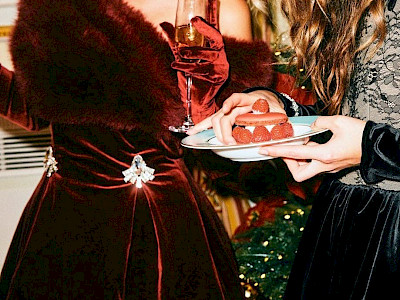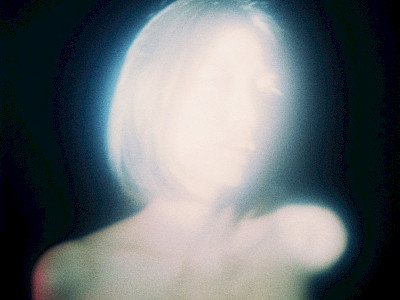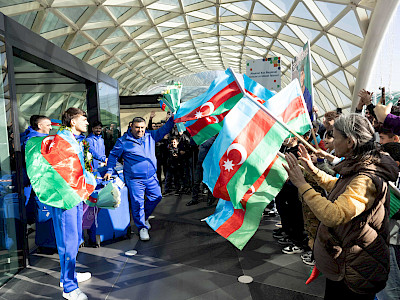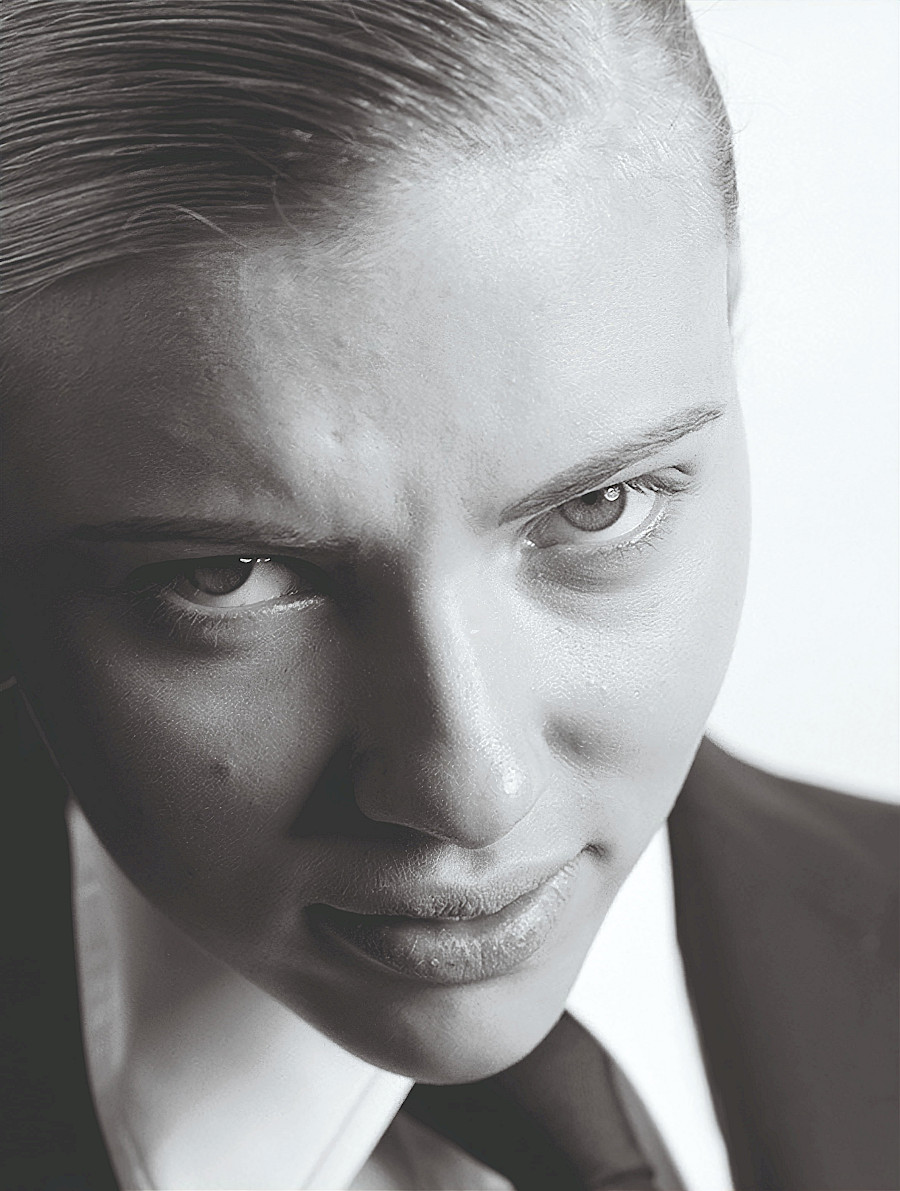
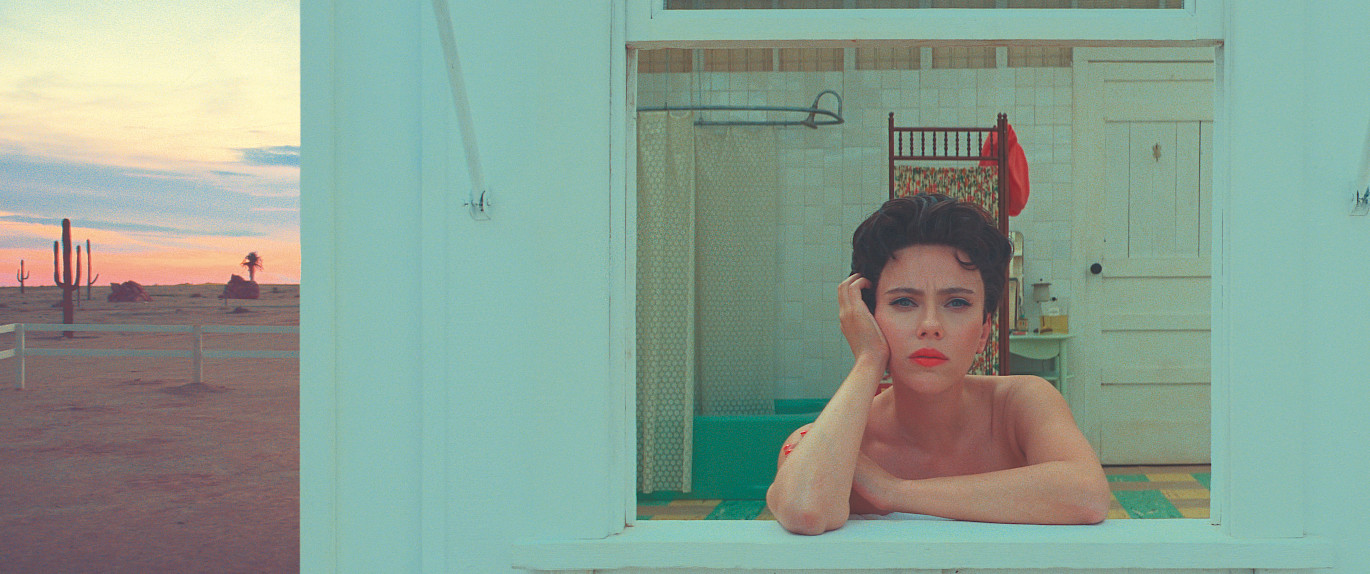
Bir zamanların ən uğurlu aktrisalarından biri, Vudi Allen və Brayan De Palmanın ilham mənbəyi Skarlett Yohansson 78-ci Kann Kino Festivalında rejissor kimi debütünü təqdim etdi.
Onun ekran işi “Böyük Eleonora” (2025) 94 yaşlı Eleonora Morqenşternin hekayəsidir. O, təsadüfən Holokostdan sağ qalanların arasında olur və mərhum rəfiqəsinin bioqrafiyasını öz həyatı kimi təqdim edir. Gözlənilmədən yerli ictimaiyyətin, medianın, hətta məşhur televiziya şousunun diqqət mərkəzinə çevrilir.
Sadə bir yalan hadisələrin elə bir zəncirini doğurur ki, ondan çıxış yolu tapmaq getdikcə daha da çətinləşir. “Böyük Eleonora” artıq gələcək “Oskar” yarışında Amerika Kino Akademiyasının diqqətinə iddialı namizədlərdən biri kimi dəyərləndirilir. Amma ən əsası odur ki, məşhur aktrisa karyerasında mühüm bir mərhələyə qədəm qoyaraq ilk dəfə kamera arxasına keçmiş və özünə yeni bir yaradıcılıq ampluası seçmişdir.
Rejissor olmaq istədiyinizi ilk dəfə nə vaxt anladınız?
Mən uşaq yaşlarımdan rejissor olmağı arzulayırdım. İlk dəfə rejissor olmağın nə demək olduğunu 12 yaşımda, “Atları ram edən” (1998) filmində çəkiləndə dərk etdim. Robert Redfordun necə səhnə qurduğunu diqqətlə izləyirdim və öz-özümə dedim: “Mən də bu işlə məşğul olmaq istəyirəm.”
Sonralar, 19 yaşımda, bütün diqqətimi aktyorluğa yönəltdim və bu arzumu arxa plana atdım, artıq mənim üçün prioritet deyildi. Təxminən altı il əvvəl öz prodüserlik şirkətimi qurdum və istehsal prosesinə daha dərindən baş vurdum. Bir müddət özümü bu fikirdən çəkindirməyə çalışırdım, çünki bu peşənin çox yorucu olduğunu bilirdim: sən daim başqalarının problemlərini həll etməli olursan. Amma qəlbimin dərinliyində ümid edirdim ki, bir gün “həmin o” ssenari ilə rastlaşacağam.
“Eleonora”nın ssenarisi qarşıma çıxdıqda isə vaxt heç də əlverişli deyildi, amma hiss etdim ki, artıq hazıram. Bu məsuliyyəti üzərimə götürmək üçün həm özüməinamım, həm də emosional yetkinliyim var idi. Üstəlik, bu gün kino aləmində qadın rejissorların sayı artır. Yol artıq çəkilib, bu yolda tək başına mübarizə aparmağa ehtiyac yoxdur.
Bu ssenaridə sizi nə cəlb etdi?
Bu hekayə məni dərinliklərə qədər sarsıtdı. O, mənə gəncliyimdə – 90-cı illərdə və 2000-ci illərin əvvəllərində böyük məhəbbətlə izlədiyim filmləri xatırlatdı: səmimi, şəxsi və insanı içinədək təsirləndirən ekran işlərini. Mənə həm də Nyu-Yorku müstəqil bir obraz kimi göstərmək ideyası xoş gəldi. Bu şəhərlə münasibətlərim mürəkkəbdir: orada uzun müddət qala bilmirəm, amma hər dəfə uzaqlaşanda dəli kimi darıxıram. Mən onun enerjisini, ritmini, daim hərəkətdə olan bir orqanizmin parçası olma hissini sevirəm. Onun çevikliyi, hər şeyin əlçatan və yaxın olması, həyat tərzinin insana bəxş etdiyi o “ərköyünlük” duyğusu üçün darıxıram.
Məni ilhamlandıran başqa bir cəhət isə 80-90 yaşlı aktyorlarla işləmək imkanı idi. Mən yaşlı insanları çox sevirəm: onlar bənzərsiz həyat təcrübəsi, möhtəşəm müdriklik və dünyaya özünəməxsus baxış gətirirlər. Və əgər onlar bunları paylaşmağa hazırdırsa – bu, sözün əsl mənasında qiymətsizdir.
İllər ərzində yüzlərlə ssenari oxumuşam, amma belə bütöv, bitmiş fikri ifadə edən bir materialla nadir hallarda qarşılaşmışam. Burada həm dəqiq struktur, həm orijinal konsepsiya, həm də səmimi emosional dərinlik vardı. Bu, elə nadir hallardan biridir ki, elə bil hekayə özü səni seçir.
Rejissor kimi özünüzdə nə kəşf etdiniz?
Rejissorluq peşəsi mənim üçün otuz illik aktyor karyeramın və sonrakı prodüserlik təcrübəmin təbii davamı oldu. Amma aktyorlarla kamera arxasından necə işləməli olduğumu, açığı, heç təsəvvür etmirdim. Və birdən, ilk çəkiliş günündə anladım ki, biz eyni dildə danışırıq. Bu, mənim üçün həm böyük bir kəşf, həm də inanılmaz bir yüngüllük hissi idi. Bu sayədə komandamı incə, hörmətlə və düzgün istiqamətə yönləndirmək bacarığı qazandım.
Prodüserlik yolunuz haradan başladı?
Əvvəlcə icraçı prodüser kimi özümü sınadım. Amma ötən yay ilk böyük prodüser layihəmi təqdim etdim — “Məni Aya göndər” (2024) adlı romantik komediyanı. Onun mərkəzində 1960-cı illərdə NASA-nın imic böhranı dayanırdı, ABŞ isə həmin dövrdə insanı Aya göndərən ilk ölkə olmuşdu. Filmdə mən həm də marketoloq rolunda çəkilmişdim, tərəf-müqabilim isə Çenninq Tatum idi.
Onun mən düşündüyümdən tamam fərqli biri olduğunu gördüm. Məncə, o, qapalı, ciddi və bir qədər qaradinməz xarakterli bir insan idi. Amma çəkiliş meydançasında tamamilə başqa Tatumla rastlaşdım — enerjili və zarafatcıl biri ilə. Ya küncdən çıxıb məni qorxudurdu, ya da arxamda qəribə səslər çıxarırdı, bəzən də hiss etdirmədən barmağını parikin altına soxurdu... Bir sözlə, onunla darıxmaq mümkünsüz idi.
Mənim prodüserlik şirkətim layihənin maliyyələşməsini üzərinə götürdü və məlum oldu ki, insanları bu işə pul yatırmağa inandırmaq heç də asan deyil, hətta portfoliosunda böyük büdcəli filmlər olan tanınmış aktrisa olsan belə. Bu mənada, mən bu gün də hər dəfə ideyalarımı “satıram”, onların dəyərini yenidən sübut etməli oluram.
Fikrimcə, aktrisa kimi karyeranızı davam etdirib-etdirməyəcəyiniz sualına ehtiyac yoxdur, nə də olsa, Kann festivalında Ues Andersonun “Finikiyalı sxem” filmini təqdim etdiniz. Bəs bu rejissoru bu qədər xüsusi edən nədir?
Bu dəfə mənim rolum kiçik idi “Kuzen” adlı sirli bir obrazı canlandırdım. Filmin bütün hekayəsi qrotesk yumorla doludur və məhz Uesin işlərində ən çox sevdiyim də budur. Mənim xoşuma gələn odur ki, o, sənə tamamilə “burada və indi” ola biləcəyin bir məkan yaradır.
Onun yanaşması inanılmaz dərəcədə detallıdır: kamera hərəkətləri, replikalar, səhnə düzüşülü - hamısı ən xırda nüansına qədər hesablanıb. Amma bütün bunların içində azadlıq və iştirakçılıq hissi yaranır. Bəzən bu, paradoks kimi görünür: sanki mükəmməl qurulmuş bir mexanizmin hissəsisən, amma birdən anlayırsan ki, onun içində improvizasiya edə bilirsən. Bu isə çəkiliş prosesini çox dinamik edir.
Məsələn, bir səhnədə kimsə ipdən asılmış bir cüt ayaqqabı tutmalı idi. Əvvəlcə bu ideya mənə qəribə göründü, amma sonra rekvizitor elə bir ip gətirdi ki, səhnəyə tam uyğun gəldi. Uesin beyninə bir fikir gəlirsə, o, onu mükəmməl şəkildə həyata keçirir. Biz qum karxanasında, sanki boşluğun ortasında çəkiliş aparırdıq, amma buna baxmayaraq, hər şey incəliklə düşünülmüşdü. Bu, doğrudan da sehrli bir təcrübə idi.
Ən gülməli çəkilişiniz hansı olub?
Yəqin ki, bu, Conatan Qleyzerin “Dərinin altında” (2013) filmi idi. Çəkilişlər gizli kameralarla aparılırdı, kadrda isə adi küçə adamları olurdu. İlk dəfə rejissor mənə küçəyə çıxıb sadəcə insanlarla danışmağı təklif edəndə düşündüm ki, o, dəli olub. Mən necə yad insanlara yaxınlaşıb söhbət edə bilərdim ki? Şübhələrimi onunla bölüşdüm və zarafatla əlavə etdim ki, bunu yalnız başqa bir planetdə edə bilərəm. O isə cavab verdi: “Sən artıq başqa planetdəsən.”
Ən gülməli hadisə isə Qlazqoda baş verdi. Görünür, orada insanlar həqiqətən də kinoya az gedirlər və Hollivud aktyorlarını o qədər də tanımırlar. Bir səhnədə mən səkiyə yıxılmalı idim. Elə həmin an yoldan keçənlər dərhal köməyimə qaçdılar, tamamilə xəbərsiz idilər ki, çəkiliş gedir. Amma bir neçə nəfər məni şübhə ilə süzdü və soruşdu ki, görəsən, mən heç vaxt filmlərdə çəkilməmişəmmi.
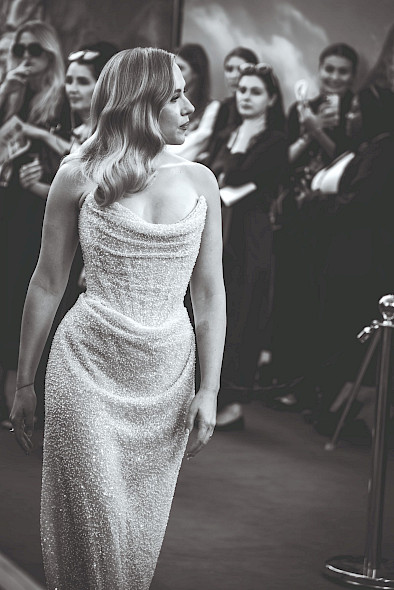
Öz əksimə baxmağı sevirəm
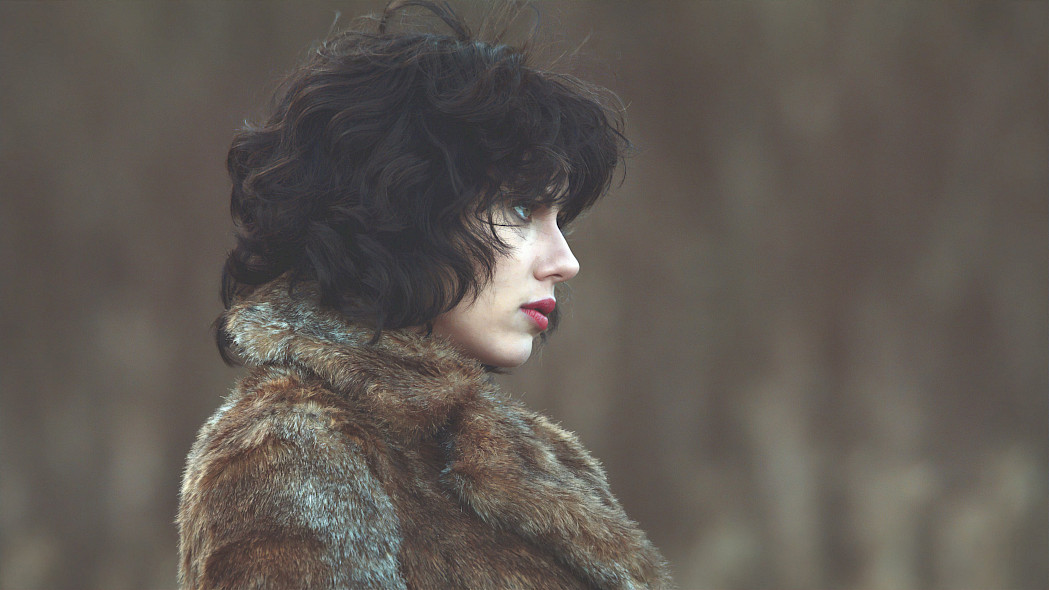
İnsanları bizə pul verməyə inandırmaq olduqca çətin oldu
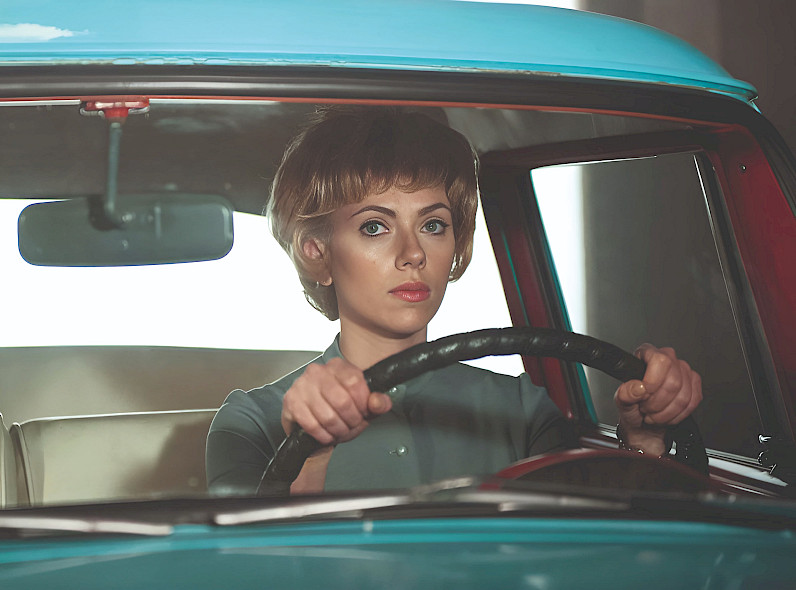 |
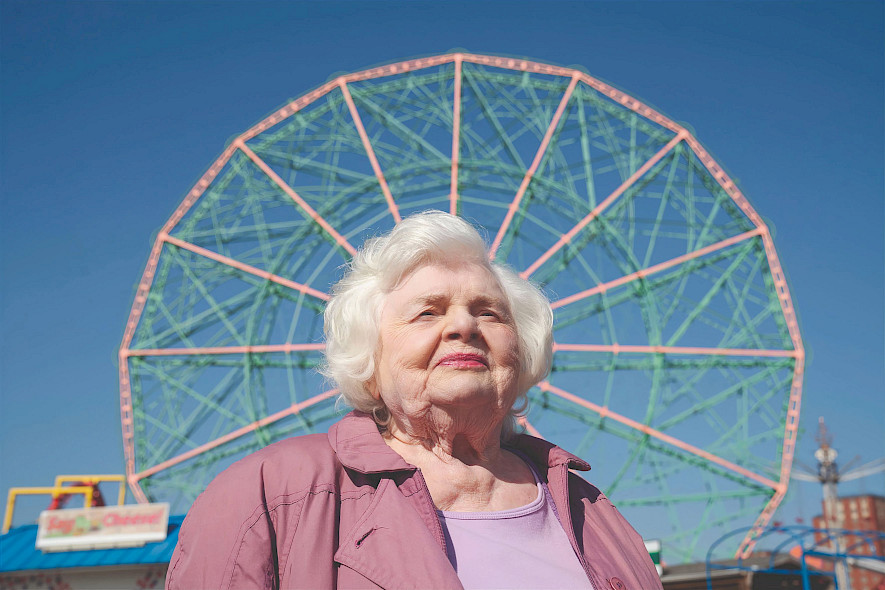 |
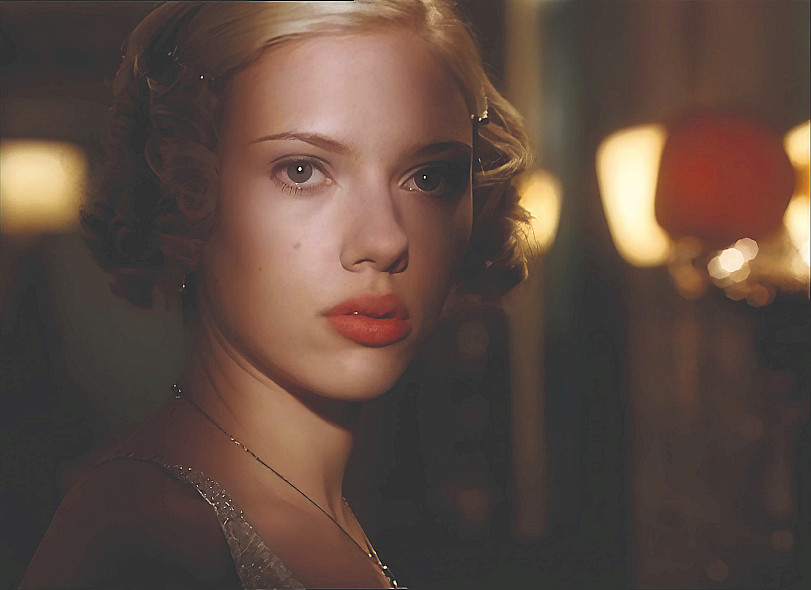
Böyük rejissorlarla işləyəndə təzyiq hiss edirsinizmi?
Əlbəttə! Amma bu, eyni zamanda həyəcanvericidir. İlk dəfə Vudi Allenlə işləyəndə dəhşətli dərəcədə həyəcanlı idim. “Matç point” (2005) filminin ilk səhnələrində sözlərimdə ilişdim və o, qışqırdı: “Nə edirsən? Özünü ələ al!” Bu məni dərhal iş ab-havasına qaytardı və sonra hər şey problemsiz davam etdi. Bu gün mənim üçün əsas “təzyiq” sadəcə səhər oyanıb çəkilişə vaxtında gəlməkdir. Mən nə ikonayam, nə simvol, nə də ulduz – sadəcə işini sevən bir insanam.
Siz tez-tez ildə bir neçə layihədə eyni vaxtda işləyirsiniz. Bu sizi yormurmu?
Əlbəttə, kino həm emosional, həm də fiziki baxımdan böyük gərginlik tələb edir. Çəkiliş günü bəzən 14 saata qədər davam edir, xüsusi hazırlıq da lazım olur. Məsələn, “Ada” (2005) filmi üçün mən yüngül atletika ilə məşğul oldum və bir dəfə 30 kilometr qaçdım. Doğrusu, daha çox darıxdığımdan və bir az da öz eqoma uyaraq bunu etdim. Bəli, bu iş böyük güc və səylər tələb edir, amma eyni zamanda elə bil ki, insanı asılılıq yaradan bir “narkotik” kimidir. Ondan imtina etmək çox çətindir. Ən xoşbəxt an isə rejissorun “Stop! Çəkildi. Əla!” dediyi andır.
Sizdə xüsusi ritual varmı? Adətən səhərləriniz necə başlayır?
Mən adətən çox tez oyanıram. İki övladım var və qızımı məktəbə aparmalı oluram. Təəssüf ki, gözlərimi açan kimi ilk işim telefona sarılmaqdır. Bunun yaxşı olmadığını bilirəm, amma bu vərdişdən hələ də qurtula bilməmişəm.
Sonra üzümü yuyuram, dişlərimi təmizləyirəm, bir az hərəkət edirəm və yulaf südü ilə qəhvə içirəm. Bundan sonra qızımı məktəbə aparıram. Səhər idman hərəkətlərindən əlavə, həftədə təxminən dörd dəfə idman etməyə çalışıram. Əvvəllər ağır atletika ilə maraqlanırdım, indi isə pilatesə üstünlük verirəm.
Sizə tez-tez “seks-simvol” deyirlər, sizi Merilin Monro ilə müqayisə edirlər. Bu, xoşunuza gəlir?
Mən güzgüyə baxmağı və gördüyümdən məmnun qalmağı sevirəm. Bəzən saçımı düzəldir, paltarın necə oturduğuna baxır və düşünürəm: “Hər şey qaydasındadır.” Amma özümü nə Merilin Monro, nə Qreta Qarbo, nə də Marlen Ditrix kimi görürəm. Sofiya Koppolanın “Tərcümədə çətinliklər” filmindəki roluma qədər məni əsasən kiçik, epizodik rollara dəvət edirdilər və heç kim məni Monro ilə müqayisə etmirdi. Diqqət sonradan gəldi. Mən buna dəyər verirəm, amma bu, kim olduğumu müəyyənləşdirmir.
Mən nə ikonayam, nə simvol, nə də ulduz — sadəcə işini sevən bir insanam
- İctimaiyyət qarşısında çılpaq olmağı sevmirəm və bəzən bədənimə qarşı tənqidi yanaşıram. Amma çəkiliş meydançasında komplekslərim heç kimi maraqlandırmır — orada heç kim sənin bədən quruluşunda və ya görünüşündəki qüsurları axtarmır. Orada yalnız oyun vacibdir. Bu isə qorxuları kənara qoyub işə köklənməyə kömək edir.
- Mənim mühafizəçim yoxdur — rahat şəkildə alış-veriş etmək və ya sadəcə sendviç yemək istəyirəm, qara gödəkçəli, qara eynəkli bir adamın daim üzümə baxması məni narahat edər.
- Mən dadlı yeməyi sevirəm və inanıram ki, sağlam, qadına xas bədən müəyyən formalara sahib olmalıdır. Doğrudur, Morqan Sperlokun “İkiqat porsiya” (2004) filmindən sonra fastfuda daha az meyl göstərməyə başladım.
Ən xoşbəxt an isə rejissorun “Stop! Çəkildi. Əla!” dediyi andır
Müsahibə: Tatyana Rozenştayn
Foto: press-materiallar
